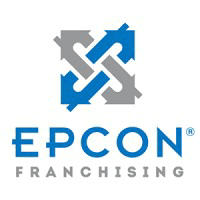Not sure if Epcon Communities is right for you?
Talk to a Franchise Advisor who can match you with your perfect franchise based on your goals, experience, and investment range.
Talk to an Expert
Epcon Communities
How much does Epcon Communities cost?
Initial Investment Range
$1,154,025 to $5,724,967
Franchise Fee
$80,000
You will receive a franchise to use an original development system and copyrighted architectural plans to develop, construct and market a project consisting of residential dwellings.
Enjoy our partial free risk analysis below
Unlock the full risk analysis to access 9 more categories covering 100+ risks.
Epcon Communities April 11, 2025 FDD Risk Analysis
Free FDD Library AI Analysis Date: July 16, 2025
DISCLAIMER: Not Legal Advice - For Informational Purposes Only. Consult With Qualified Franchise Professionals.
Franchisor Stability Risks
Start HereDisclosure of Franchisor's Financial Instability
Low Risk
Explanation
This risk was not identified. The provided audited financial statements in Item 21 indicate Epcon Communities Franchising, LLC (ECFL) is profitable, with positive net worth and healthy cash flows. Financial stability is crucial as it suggests the franchisor has the resources to support its franchisees, invest in the brand, and meet its long-term obligations. A financially weak franchisor could jeopardize your investment.
Potential Mitigations
- Even with positive financials, having your accountant review the statements for trends in revenue sources and debt is a prudent step.
- Engaging a business advisor can help you assess if the franchisor's financial resources are adequate for their growth plans and support commitments.
- Confirm with your accountant that the financial statements are audited and comply with U.S. GAAP, as they appear to be here.
High Franchisee Turnover
High Risk
Explanation
Item 20 data reveals a concerning historical pattern of franchisee exits. In 2022 and 2023, the calculated turnover rates appear to have exceeded 20% annually, driven by a high number of non-renewals and units that ceased operations. While the rate improved in 2024, this history could indicate systemic issues, such as franchisee dissatisfaction or lack of profitability. This high historical churn is a significant risk factor that may impact the long-term viability of your investment.
Potential Mitigations
- It is critical to contact a significant number of former franchisees listed in Item 20, especially those who did not renew or ceased operations, to understand their reasons for leaving.
- Your attorney should help you formulate specific questions for the franchisor regarding the high historical turnover rates.
- Engage an accountant to analyze the potential financial implications if the issues causing this high turnover are ongoing.
Rapid System Growth
Low Risk
Explanation
This risk was not identified. The outlet data in Item 20 shows steady, managed growth rather than an explosive expansion that might strain the franchisor's support systems. A measured growth rate is generally positive, suggesting a sustainable business. However, it's always important to ensure a franchisor has the infrastructure to support its franchisees, as uncontrolled growth can dilute the quality of training, site selection assistance, and ongoing operational support.
Potential Mitigations
- A discussion with your business advisor can help evaluate if the franchisor's current support staff and systems are adequate for the number of franchisees.
- When speaking with current franchisees, asking about the quality and timeliness of franchisor support is a valuable inquiry.
- Your accountant can assess from the financial statements whether the franchisor is reinvesting in support infrastructure.
New/Unproven Franchise System
Low Risk
Explanation
This risk was not identified. Item 1 indicates that Epcon Communities Franchising, LLC (ECFL) and its predecessors have been involved in franchising and development since 1996. A well-established system typically has more refined operating procedures, greater brand recognition, and a more experienced support team. These factors can reduce risks for new franchisees compared to joining an unproven, startup brand with a limited track record.
Potential Mitigations
- It is still valuable for your attorney to review the history of the franchisor and its predecessors as disclosed in Item 1.
- Engaging with long-standing franchisees can provide insights into the evolution and stability of the system over time.
- Your business advisor can help you investigate the brand's reputation in the broader real estate development industry.
Possible Fad Business
Low Risk
Explanation
This risk was not identified. The franchise operates in the residential real estate development sector, focusing on a specific "care-free living" community product. Housing is a fundamental, long-term market, not a short-lived trend. This business model does not appear to be a fad, which would otherwise carry the risk of rapidly declining consumer interest that could threaten your long-term investment.
Potential Mitigations
- A business advisor can help you analyze long-term demographic and housing trends in your specific market to validate demand.
- It is prudent to have a real estate professional assess the local market's appetite for this specific type of community development.
- In your business plan, account for the cyclical nature of the real estate market with the help of your accountant.
Inexperienced Management
Low Risk
Explanation
This risk was not identified. Item 2 of the FDD details the business experience of the management team, indicating that the principals and key executives have decades of experience in the home building industry, with many having long tenures at Epcon. An experienced management team is a significant positive, suggesting a deep understanding of the business, established support systems, and a greater ability to navigate market challenges, which is crucial for franchisee success.
Potential Mitigations
- When interviewing franchisees, asking about their direct experiences with and the quality of leadership from the management team is still a valuable step.
- A business advisor can help you review the management team's background for any potential gaps, even if they appear experienced.
- Your attorney can research the public records of key executives for any undisclosed issues.
Private Equity Ownership
Low Risk
Explanation
This specific risk was not identified. Item 1 indicates the franchisor is a privately held limited liability company and does not appear to be owned or controlled by a private equity firm. This can be a positive indicator, as it may suggest a focus on the long-term health of the brand and its franchisees rather than on strategies designed for a short-term exit or rapid return for outside financial investors.
Potential Mitigations
- Your attorney should always verify the ownership structure detailed in Item 1 and discuss the potential implications of any future sale of the franchise system.
- A review of the "Assignment by Franchisor" clause in the Franchise Agreement with your attorney is important to understand your rights if ownership changes.
- Asking the franchisor about long-term succession and ownership plans is a reasonable due diligence question for your business advisor.
Non-Disclosure of Parent Company
Low Risk
Explanation
This risk was not identified. Item 1 of the FDD clearly discloses the parent companies and numerous affiliates involved in the Epcon system. Furthermore, the financial statements provided in Item 21 are consolidated, which provides a more complete view of the franchising entity's financial position. Proper disclosure of parent companies is vital for understanding the corporate structure and identifying where ultimate control and financial backing may reside.
Potential Mitigations
- Your accountant should confirm that the provided consolidated financial statements give a complete picture of the franchising entity's health.
- It is wise to have your attorney review the relationships between the franchisor, its parents, and affiliates to understand any inter-company dependencies.
- Questioning the franchisor about the specific roles of each affiliate can provide additional clarity.
Predecessor History Issues
Low Risk
Explanation
This risk was not identified. The franchisor discloses its history in Item 1, including corporate conversions and name changes tracing back to 1996. The document is transparent about this lineage and does not appear to be hiding or downplaying a problematic history from a predecessor entity. A clear and transparent history allows you and your advisors to better assess the system's background and evolution.
Potential Mitigations
- Your attorney should review the timeline and corporate changes described in Item 1 to ensure a full understanding of the entity's history.
- When speaking with long-term franchisees, asking about their experience through any corporate changes can provide valuable context.
- Your business advisor can help research the public reputation of any predecessor entities mentioned.
Pattern of Litigation
High Risk
Explanation
Item 3 reveals a significant pattern of litigation involving the franchisor and its affiliates. These concluded cases include serious allegations such as construction defects, fraud, and a major Fair Housing Act action brought by the U.S. Department of Justice which resulted in a consent decree and multi-million dollar settlement fund. This history suggests potential systemic issues in compliance, construction quality, or sales practices and represents a significant risk to you, both financially and reputationally.
Potential Mitigations
- It is imperative that your attorney thoroughly analyzes the nature, allegations, and outcomes of all disclosed litigation in Item 3.
- Engaging legal counsel to perform independent research on these cases may provide additional critical context beyond the FDD summary.
- A business advisor should help you assess the operational and financial impact these types of legal issues could have on your own project.
Disclosure & Representation Risks
Example Risk: Franchisee Financial Obligations
Blue Risk
Explanation
This risk involves the financial obligations that a franchisee must meet, including initial fees, ongoing royalties, and other required payments. Understanding these obligations is crucial for long-term success.
Potential Mitigations
- Carefully review the Franchise Disclosure Document (FDD) and consult with a franchise attorney to fully understand all financial commitments before signing.
- Conduct regular risk assessments
- Implement monitoring and reporting systems
Unlock Full Risk Analysis
Purchase the complete risk review to see all 102 risks across all 10 categories.
Financial & Fee Risks
Example Risk: Franchisee Financial Obligations
Blue Risk
Explanation
This risk involves the financial obligations that a franchisee must meet, including initial fees, ongoing royalties, and other required payments. Understanding these obligations is crucial for long-term success.
Potential Mitigations
- Carefully review the Franchise Disclosure Document (FDD) and consult with a franchise attorney to fully understand all financial commitments before signing.
- Conduct regular risk assessments
- Implement monitoring and reporting systems
Unlock Full Risk Analysis
Purchase the complete risk review to see all 102 risks across all 10 categories.
Legal & Contract Risks
Example Risk: Franchisee Financial Obligations
Blue Risk
Explanation
This risk involves the financial obligations that a franchisee must meet, including initial fees, ongoing royalties, and other required payments. Understanding these obligations is crucial for long-term success.
Potential Mitigations
- Carefully review the Franchise Disclosure Document (FDD) and consult with a franchise attorney to fully understand all financial commitments before signing.
- Conduct regular risk assessments
- Implement monitoring and reporting systems
Unlock Full Risk Analysis
Purchase the complete risk review to see all 102 risks across all 10 categories.
Territory & Competition Risks
Example Risk: Franchisee Financial Obligations
Blue Risk
Explanation
This risk involves the financial obligations that a franchisee must meet, including initial fees, ongoing royalties, and other required payments. Understanding these obligations is crucial for long-term success.
Potential Mitigations
- Carefully review the Franchise Disclosure Document (FDD) and consult with a franchise attorney to fully understand all financial commitments before signing.
- Conduct regular risk assessments
- Implement monitoring and reporting systems
Unlock Full Risk Analysis
Purchase the complete risk review to see all 102 risks across all 10 categories.
Regulatory & Compliance Risks
Example Risk: Franchisee Financial Obligations
Blue Risk
Explanation
This risk involves the financial obligations that a franchisee must meet, including initial fees, ongoing royalties, and other required payments. Understanding these obligations is crucial for long-term success.
Potential Mitigations
- Carefully review the Franchise Disclosure Document (FDD) and consult with a franchise attorney to fully understand all financial commitments before signing.
- Conduct regular risk assessments
- Implement monitoring and reporting systems
Unlock Full Risk Analysis
Purchase the complete risk review to see all 102 risks across all 10 categories.
Franchisor Support Risks
Example Risk: Franchisee Financial Obligations
Blue Risk
Explanation
This risk involves the financial obligations that a franchisee must meet, including initial fees, ongoing royalties, and other required payments. Understanding these obligations is crucial for long-term success.
Potential Mitigations
- Carefully review the Franchise Disclosure Document (FDD) and consult with a franchise attorney to fully understand all financial commitments before signing.
- Conduct regular risk assessments
- Implement monitoring and reporting systems
Unlock Full Risk Analysis
Purchase the complete risk review to see all 102 risks across all 10 categories.
Operational Control Risks
Example Risk: Franchisee Financial Obligations
Blue Risk
Explanation
This risk involves the financial obligations that a franchisee must meet, including initial fees, ongoing royalties, and other required payments. Understanding these obligations is crucial for long-term success.
Potential Mitigations
- Carefully review the Franchise Disclosure Document (FDD) and consult with a franchise attorney to fully understand all financial commitments before signing.
- Conduct regular risk assessments
- Implement monitoring and reporting systems
Unlock Full Risk Analysis
Purchase the complete risk review to see all 102 risks across all 10 categories.
Term & Exit Risks
Example Risk: Franchisee Financial Obligations
Blue Risk
Explanation
This risk involves the financial obligations that a franchisee must meet, including initial fees, ongoing royalties, and other required payments. Understanding these obligations is crucial for long-term success.
Potential Mitigations
- Carefully review the Franchise Disclosure Document (FDD) and consult with a franchise attorney to fully understand all financial commitments before signing.
- Conduct regular risk assessments
- Implement monitoring and reporting systems
Unlock Full Risk Analysis
Purchase the complete risk review to see all 102 risks across all 10 categories.
Miscellaneous Risks
Example Risk: Franchisee Financial Obligations
Blue Risk
Explanation
This risk involves the financial obligations that a franchisee must meet, including initial fees, ongoing royalties, and other required payments. Understanding these obligations is crucial for long-term success.
Potential Mitigations
- Carefully review the Franchise Disclosure Document (FDD) and consult with a franchise attorney to fully understand all financial commitments before signing.
- Conduct regular risk assessments
- Implement monitoring and reporting systems
Unlock Full Risk Analysis
Purchase the complete risk review to see all 102 risks across all 10 categories.










